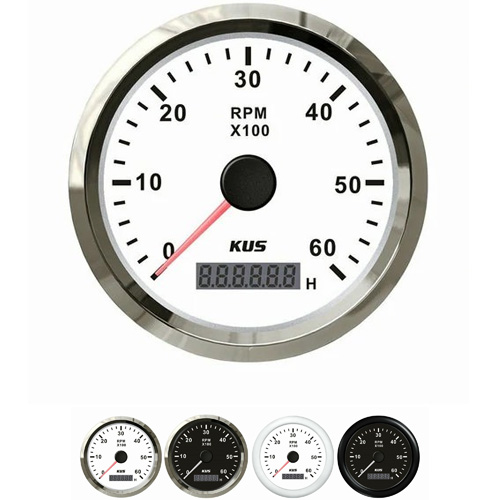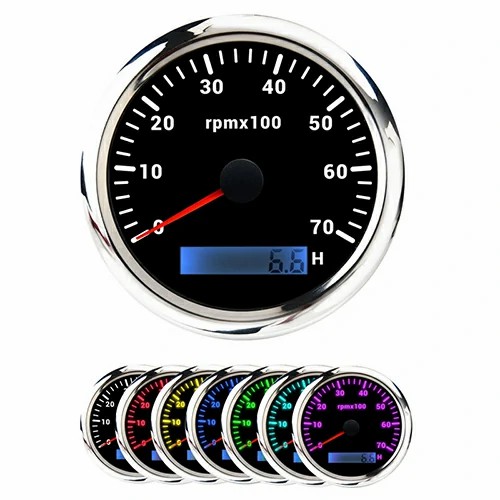how does a mechanical tachometer work
Number of revolutions on automobile instrument: what is the working principle of tachometer. There is a crankshaft speed sensor on the engine, which will send a pulse signal with the rotation of the engine crankshaft (some gasoline engines take the ignition pulse signal). This signal is transmitted to the engine computer. After calculation, a control signal is output and transmitted to the mechanical tachometer to control the rotation of the driving stepping motor on the tachometer (the pointer is directly installed on the rotating shaft of the stepping motor). The greater the number of revolutions, the faster the pulse value will be displayed on the engine speed meter. In order to accurately display the speed, the stepping motor only takes one step of 1 / 3 degree.
Revolution number on automobile instrument: what is the use of tachometer? How do we look at the mechanical tachometer?
1. The engine speed is displayed to reflect whether the engine works normally
The speed is a barometer of the working state of the engine. When the engine is in idle and neutral gear, the speed shall be stable and within a reasonable range; When stepping on the accelerator pedal in neutral gear, the speed shall change smoothly with the smooth rise and fall of the pedal. When the accelerator pedal is stabilized, the tachometer pointer shall remain at a certain speed scale. If the idle speed of the engine is high or low, the speed is unstable, and the tachometer shakes, it indicates that there is a fault in the engine.
2. As a reference when shifting the manual transmission, select the appropriate shift timing to make the engine always work in the most economical working range.
The torque of the engine only has the maximum value in a certain range. Beyond this range, the torque will be greatly reduced, the engine power is insufficient, the car is unable to accelerate, or even stall or stall. Therefore, it is most reasonable for the transmission to shift in the maximum torque range of the engine. We only need to look at the tachometer to know this range. Some people say that the old driver can hear the sound of the engine by experience. I don't think it's very accurate. Now cars are so quiet that it is difficult for the sound of the engine to reach the driver's ears.Nowadays, cars are generally controlled to increase gear at about 2000 rpm, and downshift when it is lower than 1200 rpm. The speed corresponding relationship is probably that the speed of 2000 rpm in 2nd gear can be increased to 3rd gear, the speed of 3rd gear 42 can be increased to 4th gear, and the speed of 4th gear 60 can be increased to 5th gear. Now some manual models are also very intelligent. They can shift gears according to engine speed, vehicle speed and other signals, which is really a blessing for some novices.
3. Judge the fault of the car according to the engine speed
The speed reflects the working state of the engine. If the speed is unstable, high and low, the engine must have failed. There is also a mismatch between the engine speed and the vehicle speed. This situation is generally undetectable to the owner, but it is often used by the repairman when checking the fault.
 English
English 



Get a Quote / Info